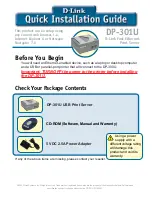
70 - DeviceMaster Security
DeviceMaster Installation and Configuration Guide
: 2000594 Rev. F
TCP and UDP Socket Ports Used by the DeviceMaster
TCP and UDP Socket Ports Used by the DeviceMaster
Following list is all of the logical TCP and UDP socket ports implemented in DeviceMasters.
Socket Port Number Descriptions
22
SSH
23 Telnet
TCP Ports 22 (ssh) and 23 (telnet) are used for administrative and diagnostic
purposes and aren't required for normal use and are enabled by default and Port
23 may be disabled.
80 HTTP
443 SSL or HTTPS
TCP Ports 80 (http) and 443 (https) are used by the web server for administration
and configuration and are enabled by default and cannot be disabled.
102 RFC1006
TCP Port 102 is used for RFC1006 (ISO over TCP) serial port access. Not used for
normal NS-Link SocketServer access. The RFC1006 server can be disabled by
setting the server port number to -1 and is enabled by default.
161 SNMP
UDP Port 161 is used by the SNMP agent if SNMP is enabled which is the default.
4606
TCP Port 4606 is required if you want to use NS-Link or PortVision DX if you want
to update firmware without setting up a TFTP server and this port cannot be
disabled.
4607
TCP Port 4607 is only used for diagnostic purposes and isn't required for normal
operation and this port cannot be disabled.
If SocketServer is to be used, then the user may enable usage of TCP or UDP ports
for access to the serial ports. These ports are not enabled by default and are also
user configurable to different values. Defaults for TCP would begin at 8000 and for
UDP would begin at 7000.
TCP 8000 - 8xxx
Incremented per serial port on the DeviceMaster.
For example: A DeviceMaster 16- port would have Ports 8000 through 8015.
UDP 7000 - 7xxx
Incremented per serial port on the DeviceMaster.
For example: A DeviceMaster 16- port would have Ports 7000 through 7015.
















































